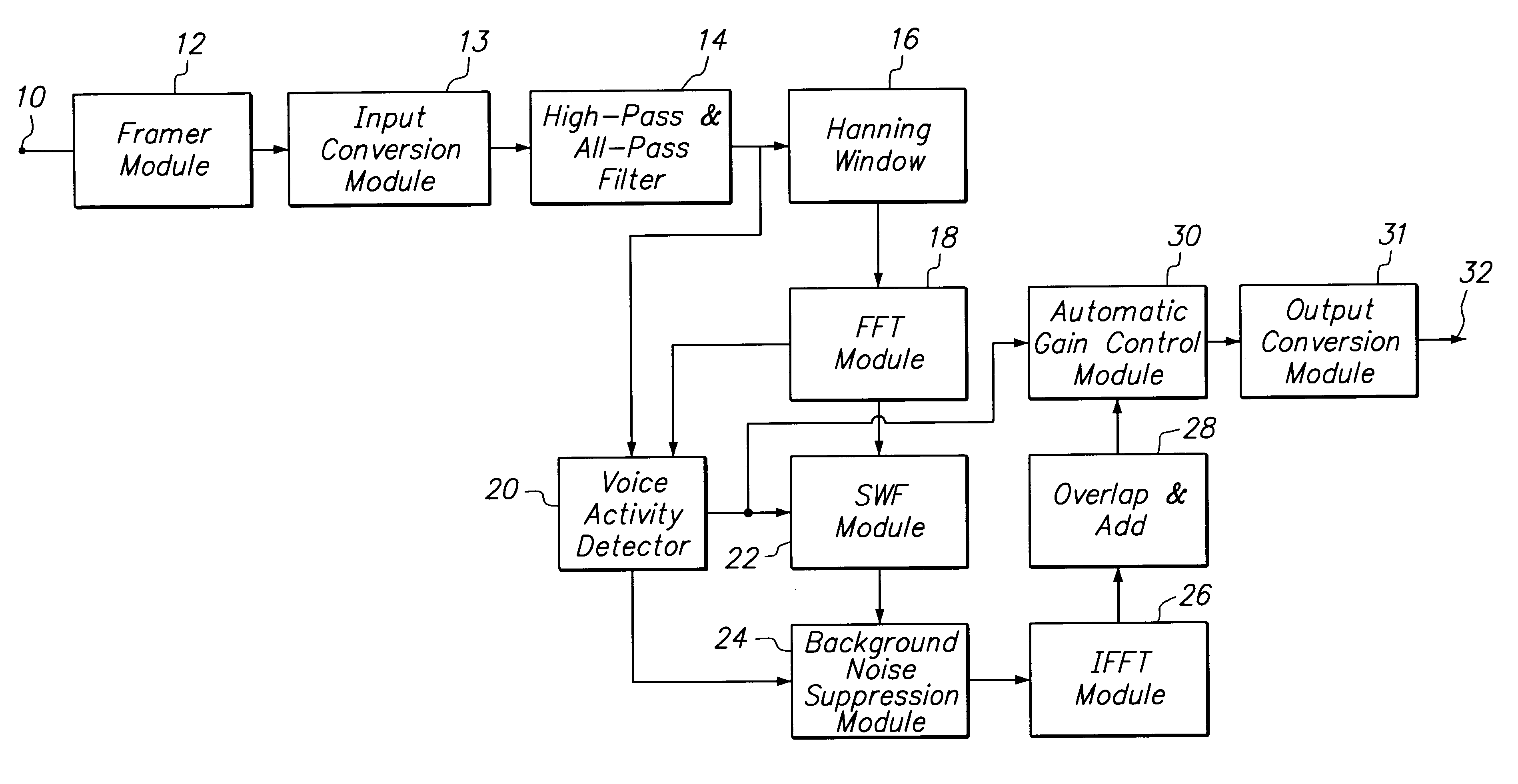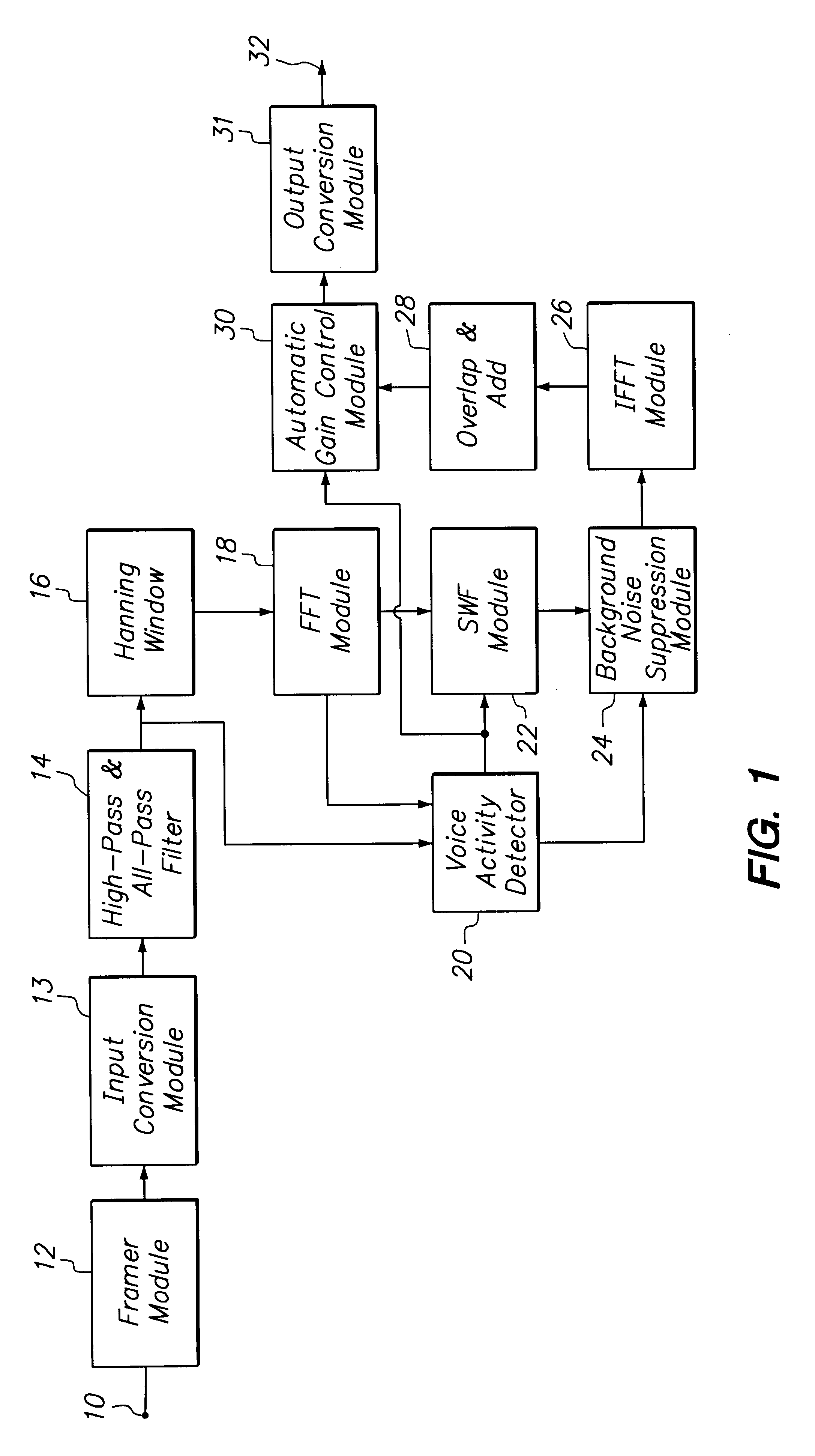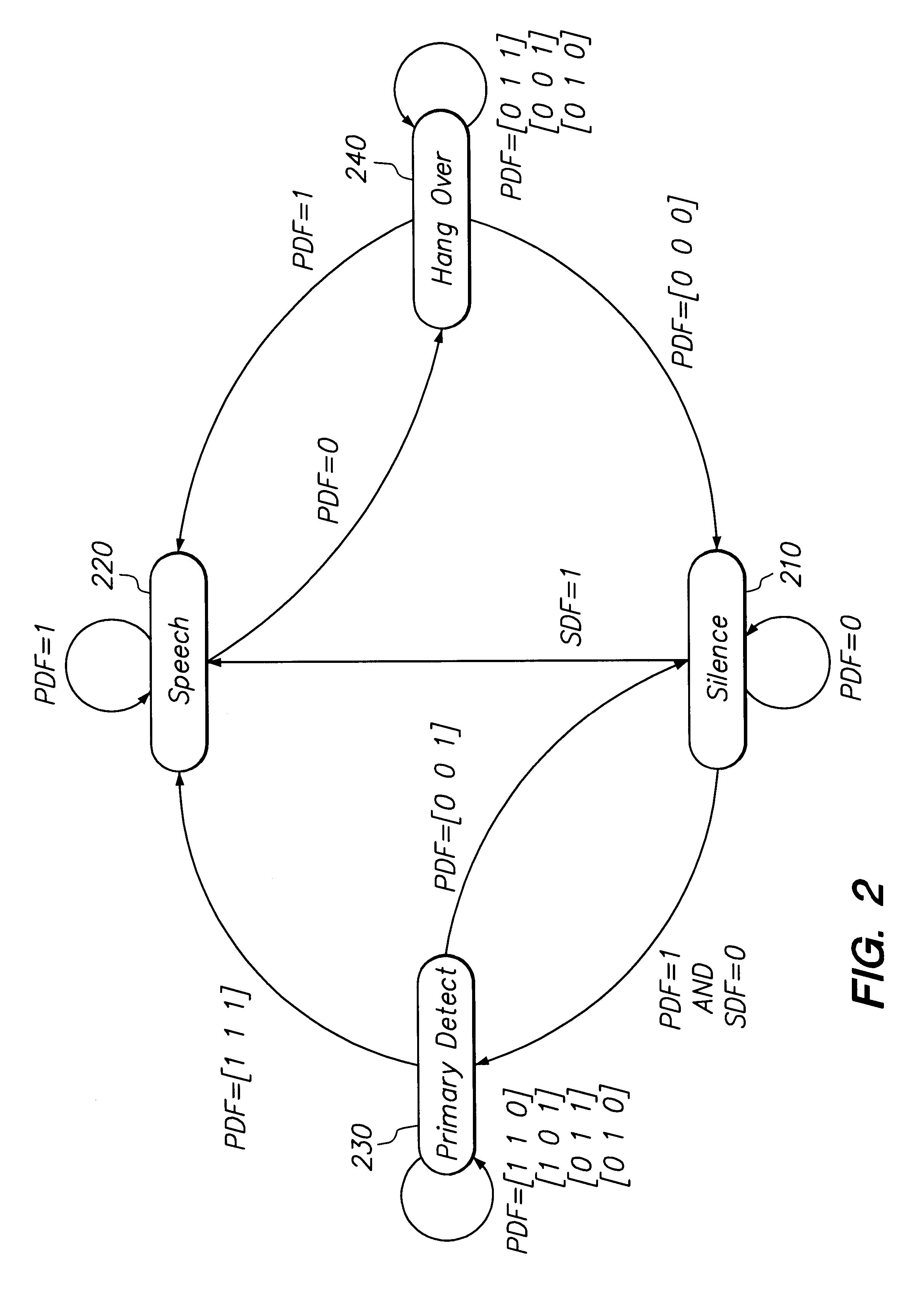Method and apparatus for enhancing noise-corrupted speech
a technology of noise corrupted speech and apparatus, which is applied in the direction of transducer casings/cabinets/supports, electrical transducers, instruments, etc., can solve the problems of "musical noise, perceptual annoying noise,
- Summary
- Abstract
- Description
- Claims
- Application Information
AI Technical Summary
Benefits of technology
Problems solved by technology
Method used
Image
Examples
Embodiment Construction
A preferred embodiment of a method and apparatus for enhancing noise-corrupted speech according to the present invention will now be described in detail with reference to the drawings, wherein like elements are referred to with like reference labels throughout.
In the following description, for purpose of explanation, specific details are set forth in order to provide a thorough understanding of the present invention. It will be evident, however, to one skilled in the art that the present invention may be practiced without these specific details. In other instances, well-known structures and devices are shown in block diagram form in order to avoid unnecessarily obscuring the present invention.
FIG. 1 shows a block diagram of an example of an apparatus for enhancing noise-corrupted speech according to the present invention. The illustrative embodiment of the present invention is implemented, for example, by using a digital signal processor (DSP), e.g., a DSP designated by "DSP56303" m...
PUM
 Login to View More
Login to View More Abstract
Description
Claims
Application Information
 Login to View More
Login to View More - R&D
- Intellectual Property
- Life Sciences
- Materials
- Tech Scout
- Unparalleled Data Quality
- Higher Quality Content
- 60% Fewer Hallucinations
Browse by: Latest US Patents, China's latest patents, Technical Efficacy Thesaurus, Application Domain, Technology Topic, Popular Technical Reports.
© 2025 PatSnap. All rights reserved.Legal|Privacy policy|Modern Slavery Act Transparency Statement|Sitemap|About US| Contact US: help@patsnap.com



